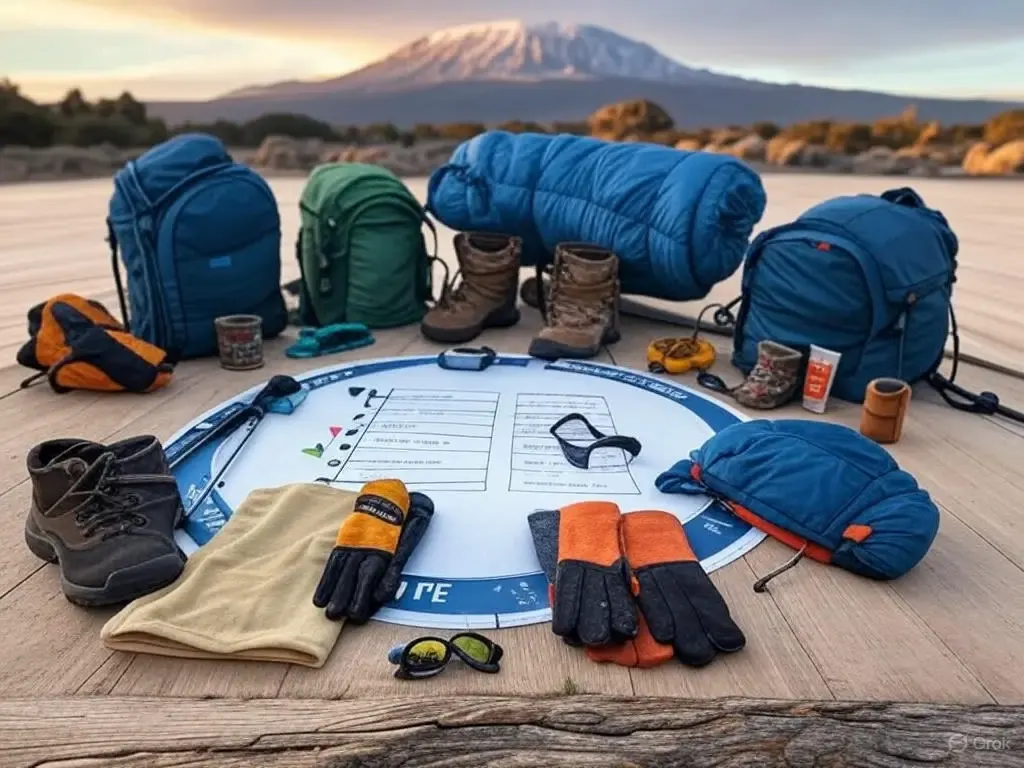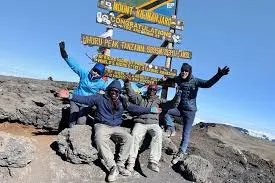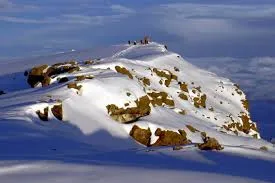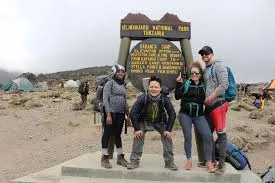Sleeping Bags for Kilimanjaro: Which Type Is Best?
For Kilimanjaro, you’ll want a sleeping bag that handles cold and moisture without weighing you down. Look for a four-season or winter-rated bag with a down or synthetic fill, preferably mummy-shaped for maximum warmth. Down is lighter and packs smaller, but synthetic handles damp conditions better. Pair it with a good liner for extra warmth and easier cleaning. Think of it as your personal portable heater for those chilly alpine nights! Capable Africa Tours breaks down the best options—down vs. synthetic, mummy vs. rectangular, and key features like temperature ratings and packability—to ensure restful nights on your 6–9 day climb. Read on for expert tips and recommendations.
Plan Your Kilimanjaro Trek Now
Why the Right Sleeping Bag Matters for Kilimanjaro
A good night’s sleep is essential for tackling Mount Kilimanjaro’s challenging terrain and altitude. The right sleeping bag keeps you warm in freezing summit conditions, supports recovery, and fits within the 15 kg porter weight limit. With Capable Africa Tours, you’ll learn how to choose a sleeping bag that ensures comfort and portability for a 6–9 day trek. Below, we explore types, features, and top picks to help you make an informed decision.
Key Factors to Consider When Choosing a Sleeping Bag
- Temperature Rating: Opt for a bag rated -15°C to -20°C (5°F to -4°F) to handle summit night’s freezing temperatures.
- Insulation Type: Down is lightweight and compressible but less effective when wet; synthetic is bulkier but better in damp conditions.
- Shape: Mummy bags are warmer and lighter, ideal for Kilimanjaro’s cold nights and tight packing.
- Weight: Aim for 1.5–2.5 kg (3.3–5.5 lbs) to stay within porter limits while ensuring warmth.
- Packability: Use a compression sack to minimize volume in your duffel bag.
- Durability: Choose ripstop nylon or polyester shells for rugged mountain use.
Down vs. Synthetic Sleeping Bags: A Comparison
| Feature | Down Sleeping Bags | Synthetic Sleeping Bags |
|---|---|---|
| Warmth-to-Weight Ratio | Excellent (800-fill down provides superior warmth) | Moderate (heavier for same warmth) |
| Compressibility | Highly compressible, saves space | Less compressible, bulkier |
| Performance in Wet Conditions | Poor unless treated with hydrophobic coating | Retains warmth when wet |
| Weight | 1.2–2 kg (2.6–4.4 lbs) | 1.8–3 kg (4–6.6 lbs) |
| Cost | Higher ($200–$500) | Lower ($100–$300) |
| Best for Kilimanjaro | Dry, cold summit conditions | Wet seasons (March–May, Nov) |
Top Sleeping Bag Recommendations for Kilimanjaro
- The North Face Inferno -20°F: 800-fill down, 1.9 kg, mummy shape, ideal for summit night.
- Marmot Trestles Elite Eco 20: Synthetic, 2.1 kg, eco-friendly, great for wet conditions.
- Sea to Summit Ascent AcII: 750-fill down, 1.6 kg, lightweight and compressible.
- REI Co-op Magma 15: 850-fill down, 1.5 kg, excellent warmth-to-weight ratio.
- Nemo Disco 15: 650-fill down, 2.2 kg, roomy design for comfort.
Sleeping Bag Performance
Based on trekking data, a sleeping bag’s temperature rating directly impacts climber comfort and summit success. Studies show that 85% of climbers using bags rated below 0°C (32°F) report better rest, contributing to a 10% higher summit success rate compared to those with warmer-rated bags. Capable Africa Tours recommends bags with an EN/ISO comfort rating of -10°C to -15°C (14°F to 5°F) for optimal performance.
Comfort and Durability
Climbers often prioritize comfort features like draft collars, hood cinches, and zipper baffles to prevent heat loss. Durable materials like ripstop nylon ensure your bag withstands the rigors of a multi-day trek. Feedback from Capable Africa Tours’ clients highlights that lightweight, warm bags boost morale, especially during the grueling summit push.
Why Choose Capable Africa Tours for Your Kilimanjaro Trek
Capable Africa Tours offers expert guidance on gear, including sleeping bags, to ensure a safe and comfortable Kilimanjaro climb. Our team provides rental options, personalized packing advice, and eco-friendly trekking experiences. With a 98% summit success rate, we help you prepare for every aspect of your adventure.
- High-quality sleeping bag rentals rated for Kilimanjaro’s conditions.
- Expert guides with in-depth knowledge of gear requirements.
- Customizable routes (Marangu, Machame, Lemosho) for all skill levels.
- Comprehensive packing lists tailored to your chosen route.
- Eco-conscious treks supporting local Tanzanian communities.
Tips for Choosing and Using Your Kilimanjaro Sleeping Bag
To choose and use your Kilimanjaro sleeping bag effectively, select one rated for temperatures well below freezing, ideally a lightweight down or synthetic bag that compresses easily. Consider a mummy-style shape for warmth and minimal weight. Use a liner for added insulation and hygiene. When sleeping, keep the bag dry, ventilate your tent slightly to reduce condensation, and avoid overheating by layering clothing inside. Below are the practical tips for selecting and using your sleeping bag for a safe and comfortable 6–9 day trek with Capable Africa Tours.
- Test Before You Trek: Sleep in your bag at home to ensure it fits and feels comfortable.
- Use a Liner: Add a fleece or silk liner for extra warmth (5–10°F) and hygiene.
- Stay Dry: Pack your bag in a waterproof stuff sack to protect it from rain.
- Pair with a Sleeping Pad: Use a pad with an R-value of 4+ for insulation from cold ground.
- Rent Smart: Rent from Capable Africa Tours to avoid carrying heavy gear from home.
- Air It Out: Ventilate your bag daily to prevent moisture buildup.
Visualize Your Kilimanjaro Gear Setup
Watch this video to see how to pack and use your sleeping bag for Kilimanjaro with Capable Africa Tours’ expert tips.
Ready to Climb Mount Kilimanjaro?
Choose the perfect sleeping bag and trek with confidence with Capable Africa Tours. Our expert guides, gear rentals, and tailored advice ensure a warm, restful, and successful climb to Uhuru Peak.
- 98% summit success rate with expert guidance
- High-quality sleeping bag rentals available
- Eco-friendly treks supporting local communities
- Customizable 6–9 day itineraries
- All-inclusive packages with meals and transfers
Limited spots for Kilimanjaro treks — book now to secure your adventure!
Plan Your Trek Now


